Colorful beaches of Jeju Island attract visitors
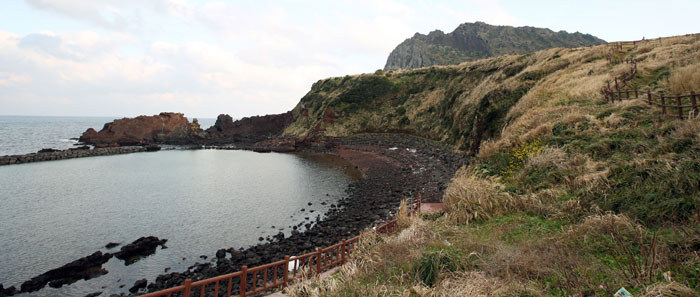
The ocean view can be seen on the right while descending the Seongsan Ilchulbong. This beach has black sand, which can be found scattered around the beaches of Jeju.
Jejudo Island has been known as a popular honeymoon destination for many years.
The island province also offers many well-known filming locations for various soap operas and movies. Recently, it has become one of the top tourist attractions among international tourists, too, backed by the Hallyu, the wave of Korean pop culture that has been sweeping across many countries. Many sightseers say they chose the island for its beautiful beaches.
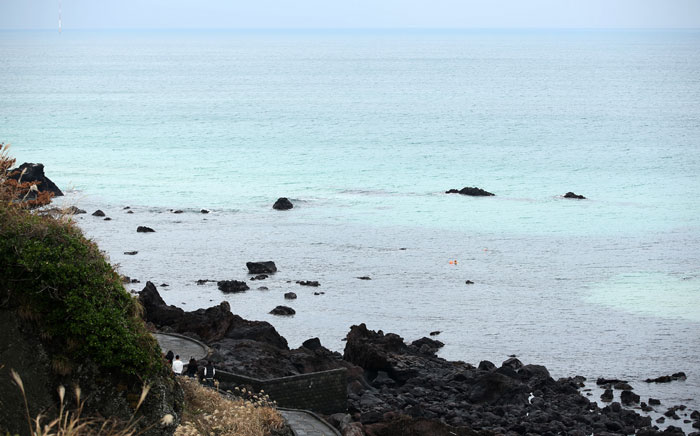
A beach with black rocks can be seen at the Aewolhae, located in Aewol-eup. The black rocks are in clear contrast to the seashore and to the sea, making the water appear even bluer.
Following along the 258-kilometer perimeter of the coast, the myriad beaches of Jeju Island each reveal charms of their own. From sandy bathing resorts to beaches decorated with rocks of various shapes and formations, the island shows off the uniqueness of its beaches, shoreline formations that can only be seen on volcanic Jeju.
One of the noticeable characteristics of Jeju beaches is the black sand. When thinking of Jeju beaches, white sand crescents are not the only answer. Jeju Island, of course, does have such beaches, but it has more beaches that feature black sand. Black rocks and sand are pieces of toughened lava and volcanic rock that are the outcome of volcanic activity on the island that occurred millions of years ago when the island was created.
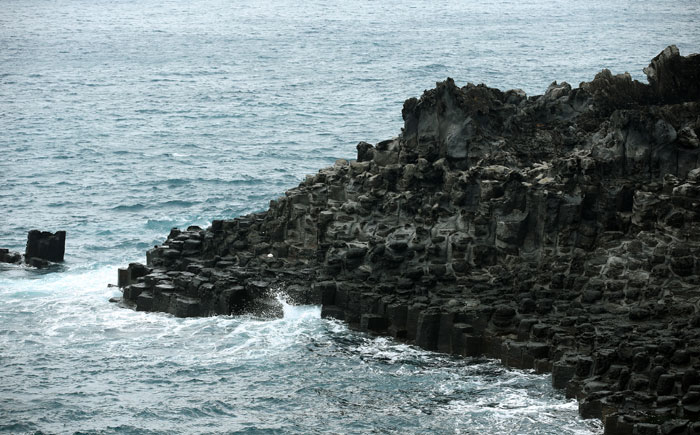
The columnar joints of the Jusangjeolli Cliffs are part of the Jungmun Tourism Complex on the southern coast of Jeju Island.
The Jusangjeolli Cliffs, part of the Jungmun Tourism Complex, are one of must-see spots on the island where visitors can truly experience the uniqueness and beauty of Jeju’s coastline. The hexagon-shaped columnar joints gather like a giant folding screen, showing the beauty of nature. These columnar joints are made during the shrinking process as basaltic lava flow cools quickly in the water. Each columnar joint is 30-40 meters tall and they extend for about 1 kilometer. During rough weather, the waves strike the columnar joints, raising a cloud of spray up to 20 meters high.

The Suwolbong Volcanic deposits located near Gosan Port show both a beach with black rocks and soil layers composed of deposits and volcanic rock.
The Suwolbong Volcanic deposits near Gosan Port show the geological history of Jeju Island as well as the beauty of its beaches. While walking along the seashore path, the striated sections of the cliff face clearly show the contrast between soil deposits and soil layers made during volcanic activity. These soil strata unveil the history of the island, which showed intense volcanic activity in its past.
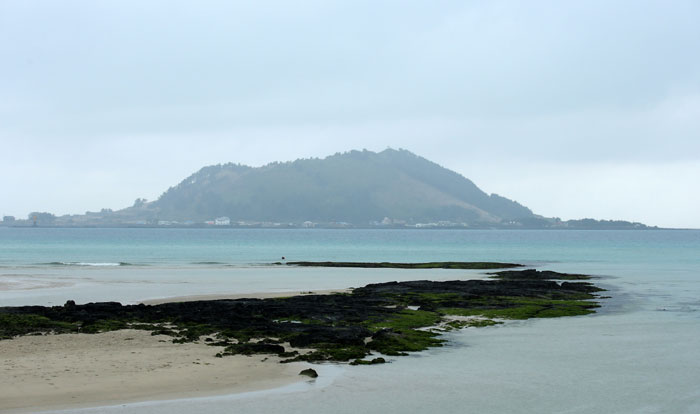
The Hyeopjae Beach has it all: crystal clear water, white sand, black rocks and green seaweed. The beach shows the true colors of the island.
The Hyeopjae Beach shows the whole range of scenic beauty that Jeju Island has to offer: a beach with white sand, black rocks, green seaweed and the blue sea. On the white shiny sand, seagulls gather. Inside the deep green seaweed, baby crabs in red crawl around. Some seagulls fly overhead while others rest. People visiting the beach enjoy the peaceful and beautiful ocean view and sea breeze.
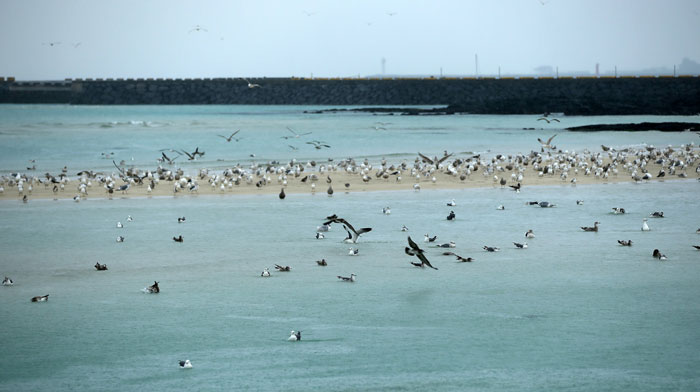
Seagulls flock to the Hyeopjae Beach. They gather together, either flying or resting.
Another white sand beach can be found at Woljeongni, located on the northeastern coast of Jeju. While driving along the coast road, this beach captures people’s eye with its half-moon seashore, with white shiny sand and a blue sky. Beachgoers enjoy a cup of coffee at the cozy cafes lining the boardwalk and enjoy the ocean view created by the blue sky, crystal clear water, white sand and white clouds. Some of them take pictures to capture the memories.

Visitors to the Woljeongni Beach enjoy the beauty of the sand and the sky.
An oreum is a small volcanic cone that can be found around the seashore of Jeju Island. They can also form small islands and rocks. Some of the outlying islands around Jeju can be approached by boat and visitors can get off to have a look around. Chagwido Island is one such mini-island. It takes 10 minutes by boat from Gosan Port to get to the island. It is shaped like a large whale floating out at sea. Gosan Beach, from where visitors can see Chagwido Island, is one of the best-known spots for sunset appreciation on Jeju.

Chagwido Island can be approached by boat from Gosan Port. This outlying rock is said to be shaped like a large whale floating on the sea.
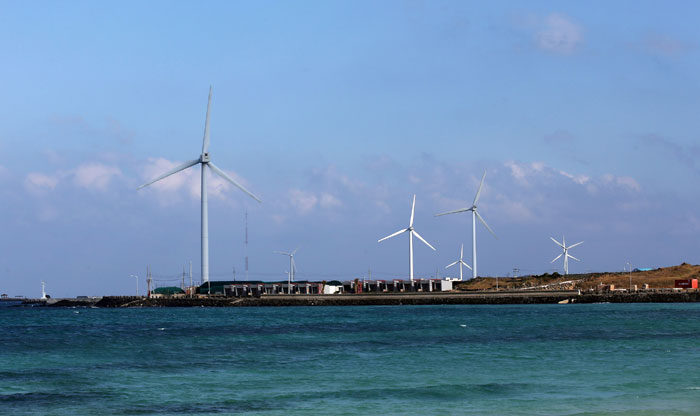
Giant wind turbines can be found on Jeju Island. These energy generators can be seen from the Woljeongni Beach.
Wind generators are also part of the uniqueness of Jeju Island. When driving along the coastal ring road, large wind turbines d can be found around many parts of the island, including at the Woljeongni Beach. A total of 65 clean-energy wind generators have been installed on the island. They slowly rotate their wings in the wind, symbolizing the cleanliness of Jeju Island.
Article by Yoon Sojung
Photos: Jeon Han
Korea.net Staff Writers
arete@korea.kr
